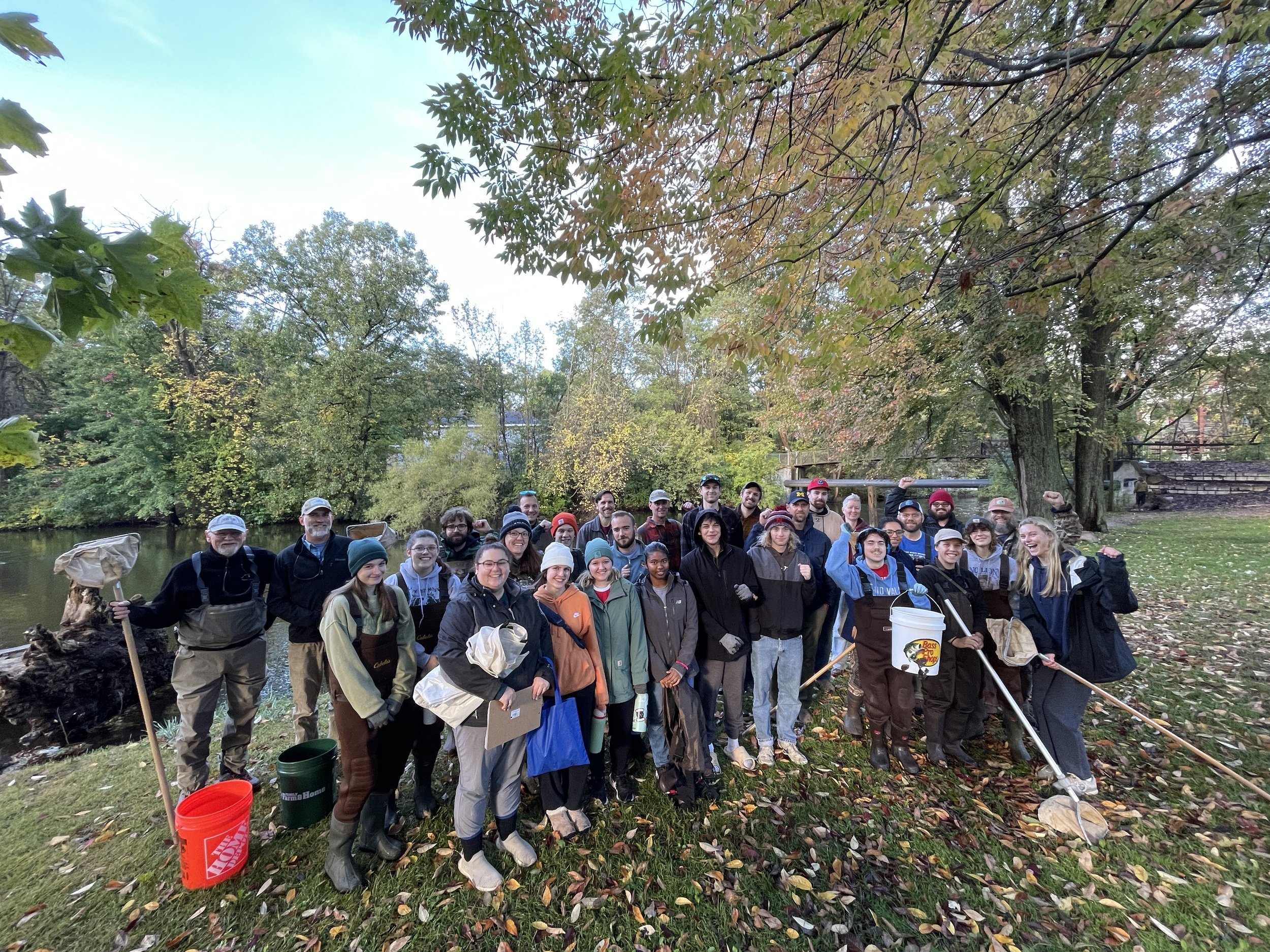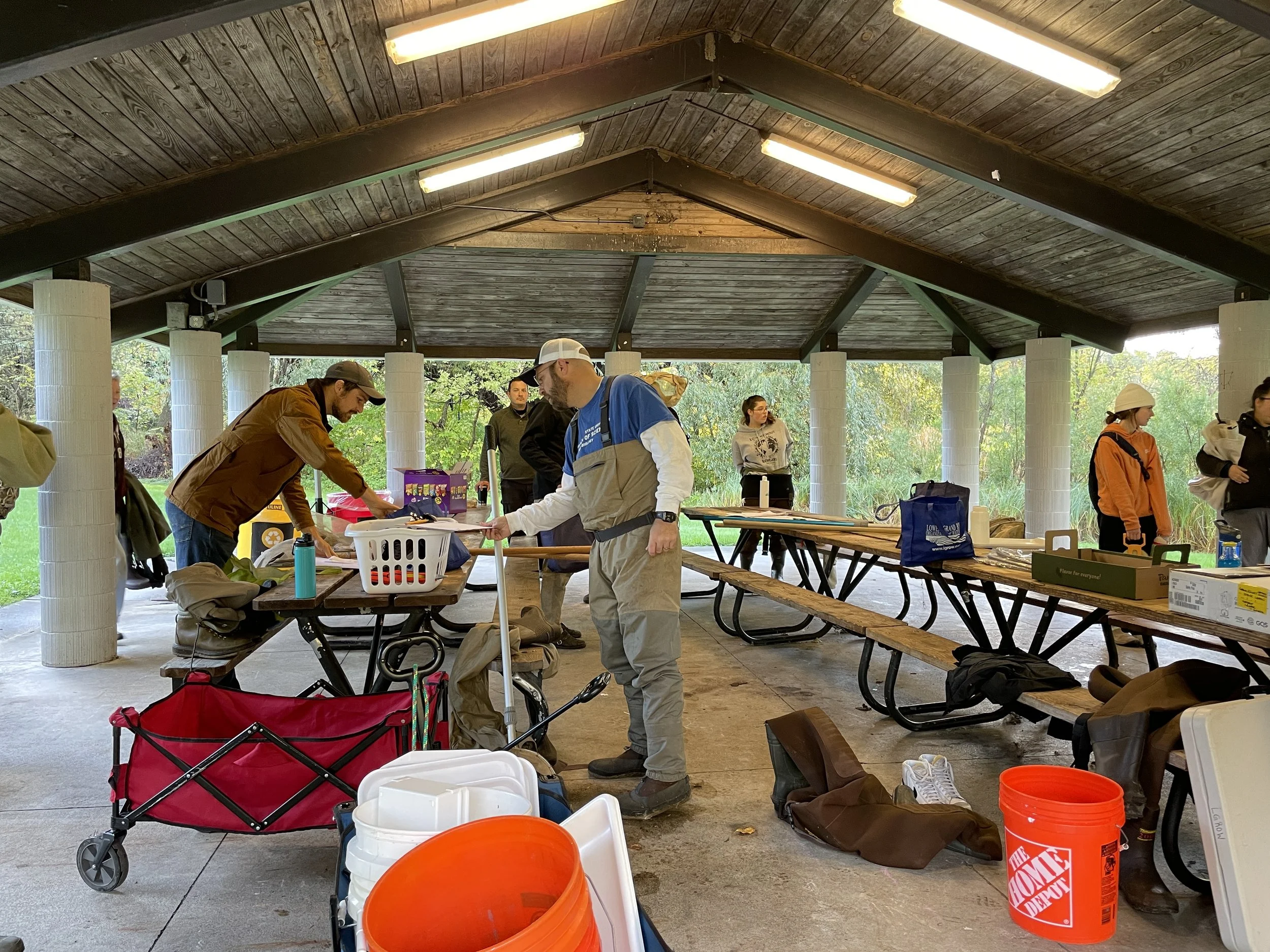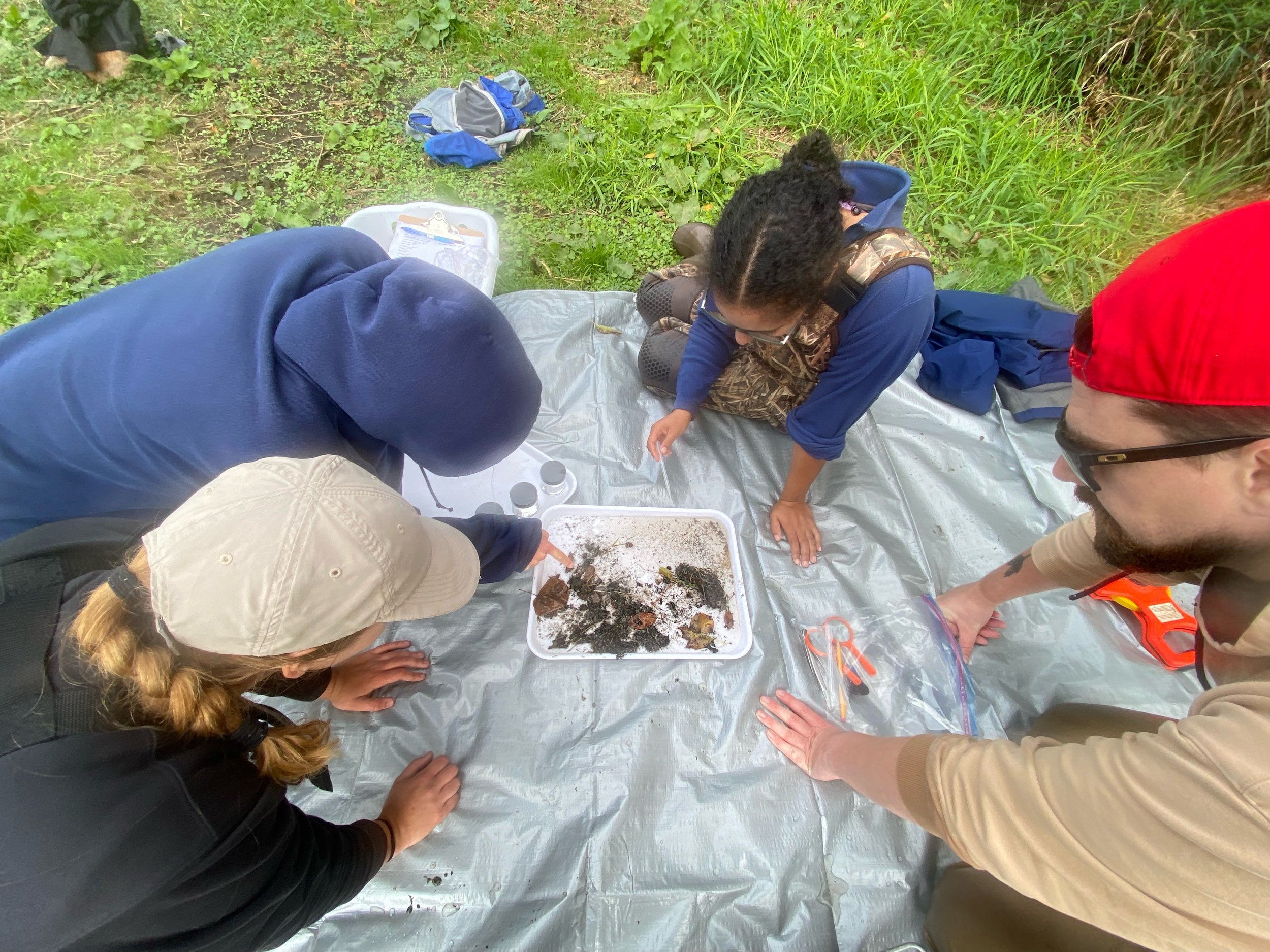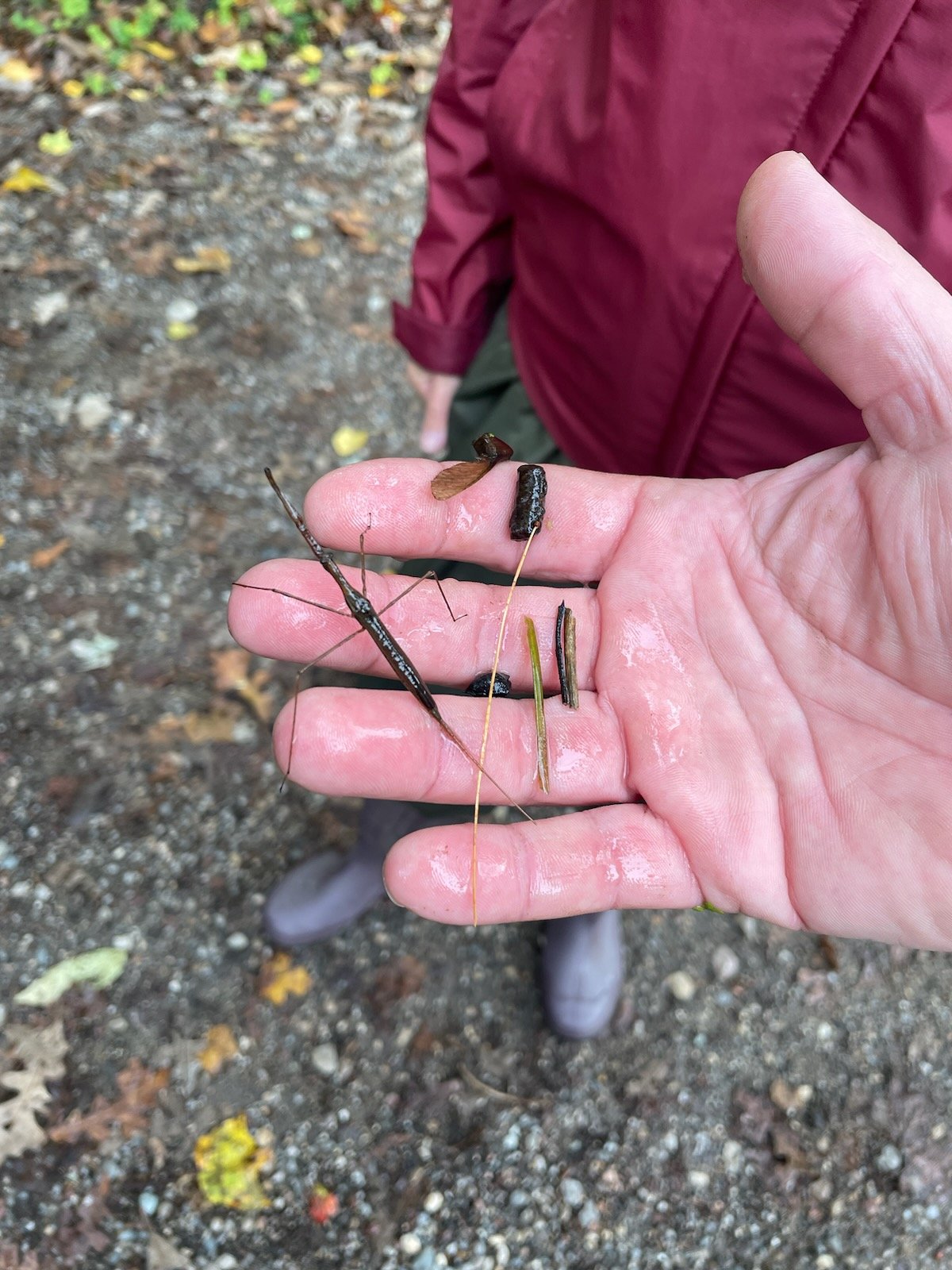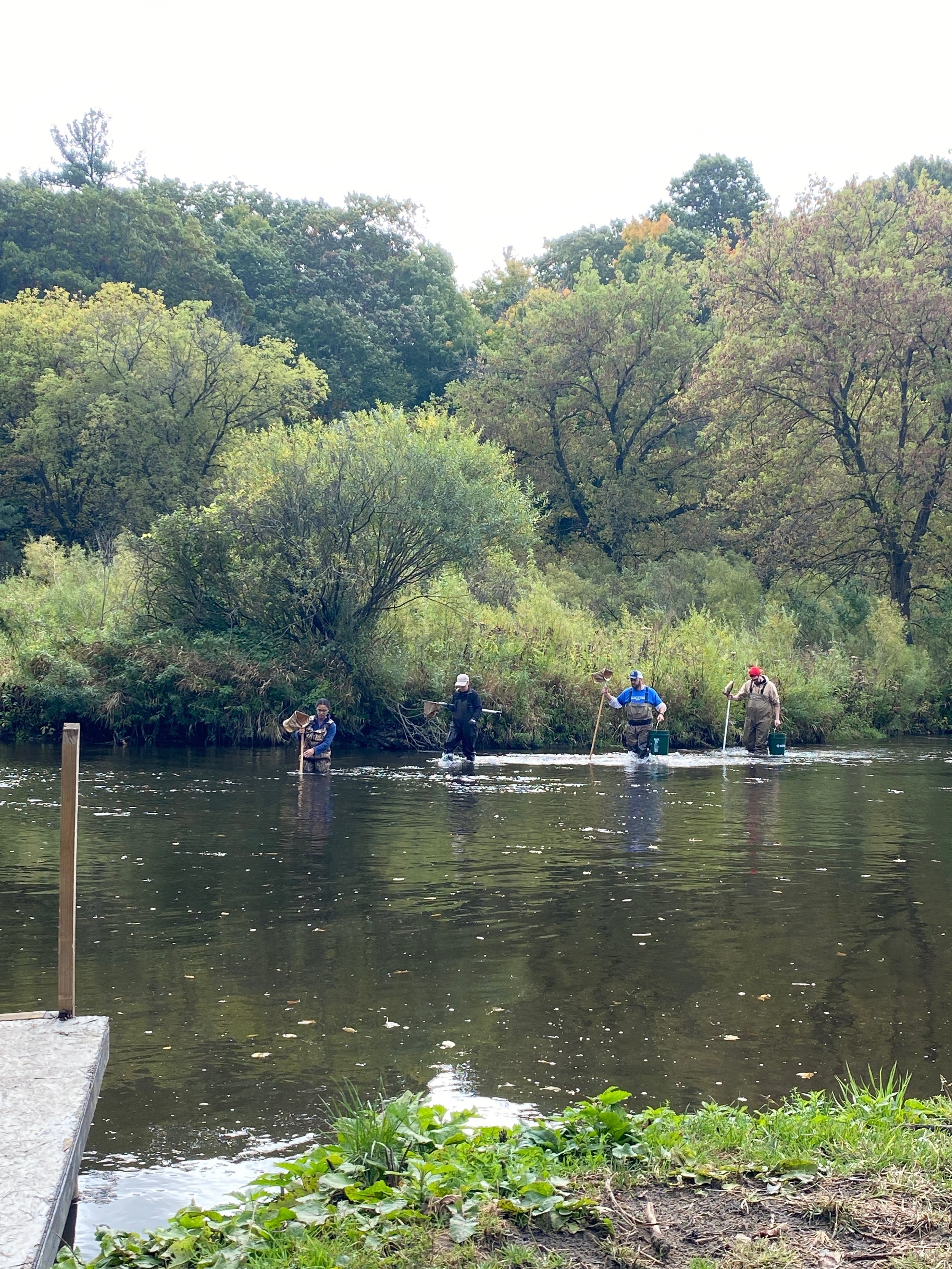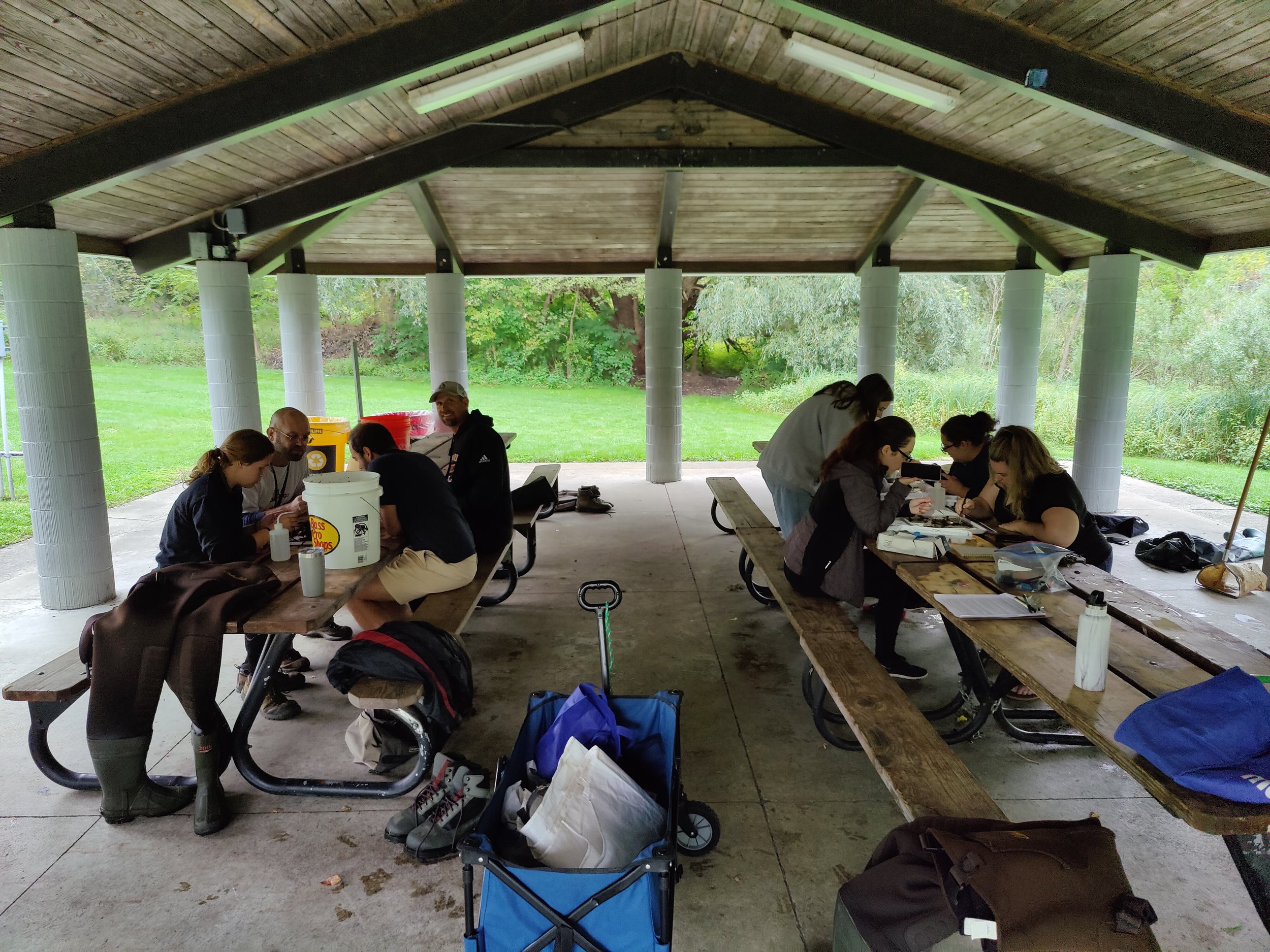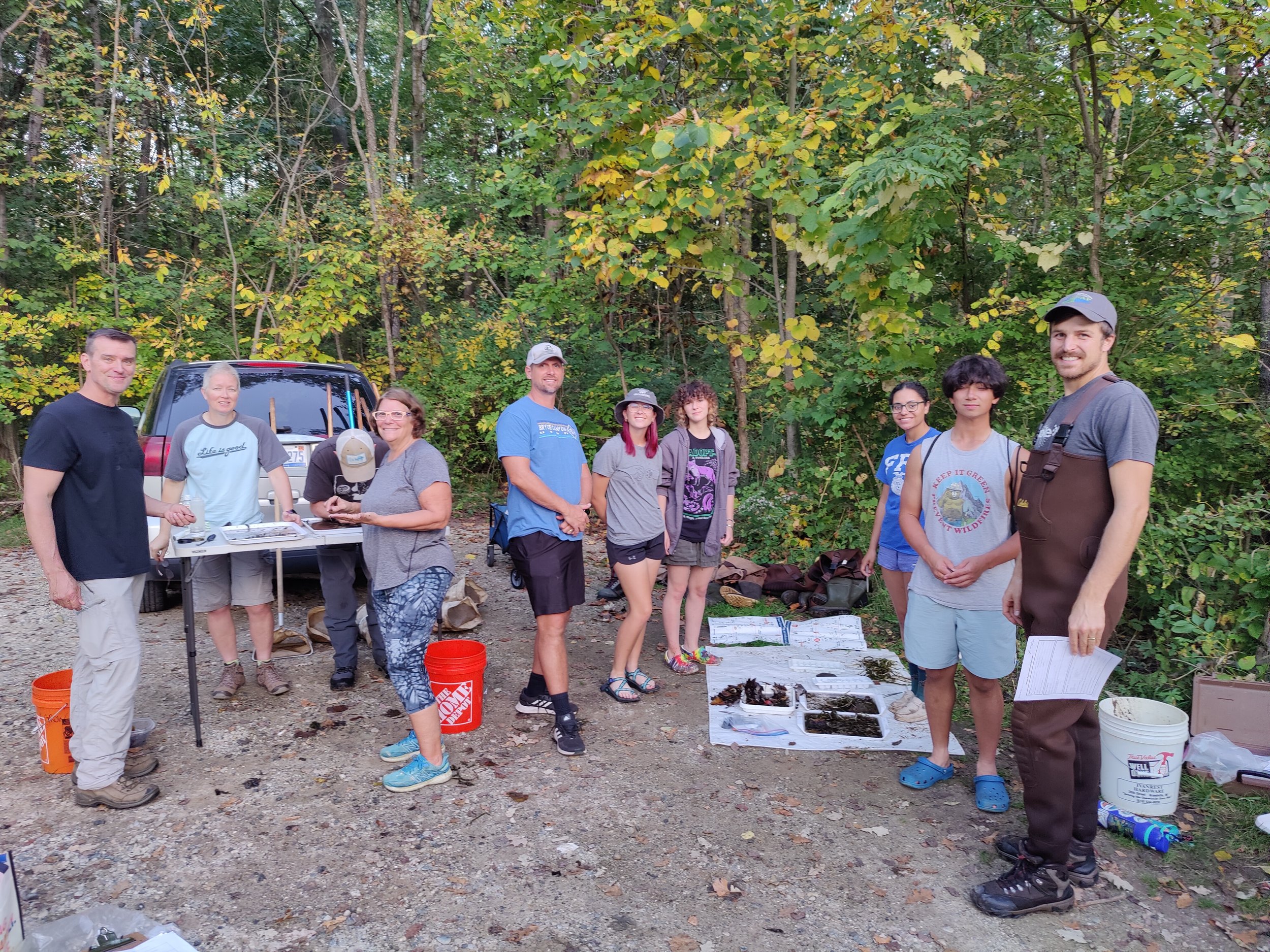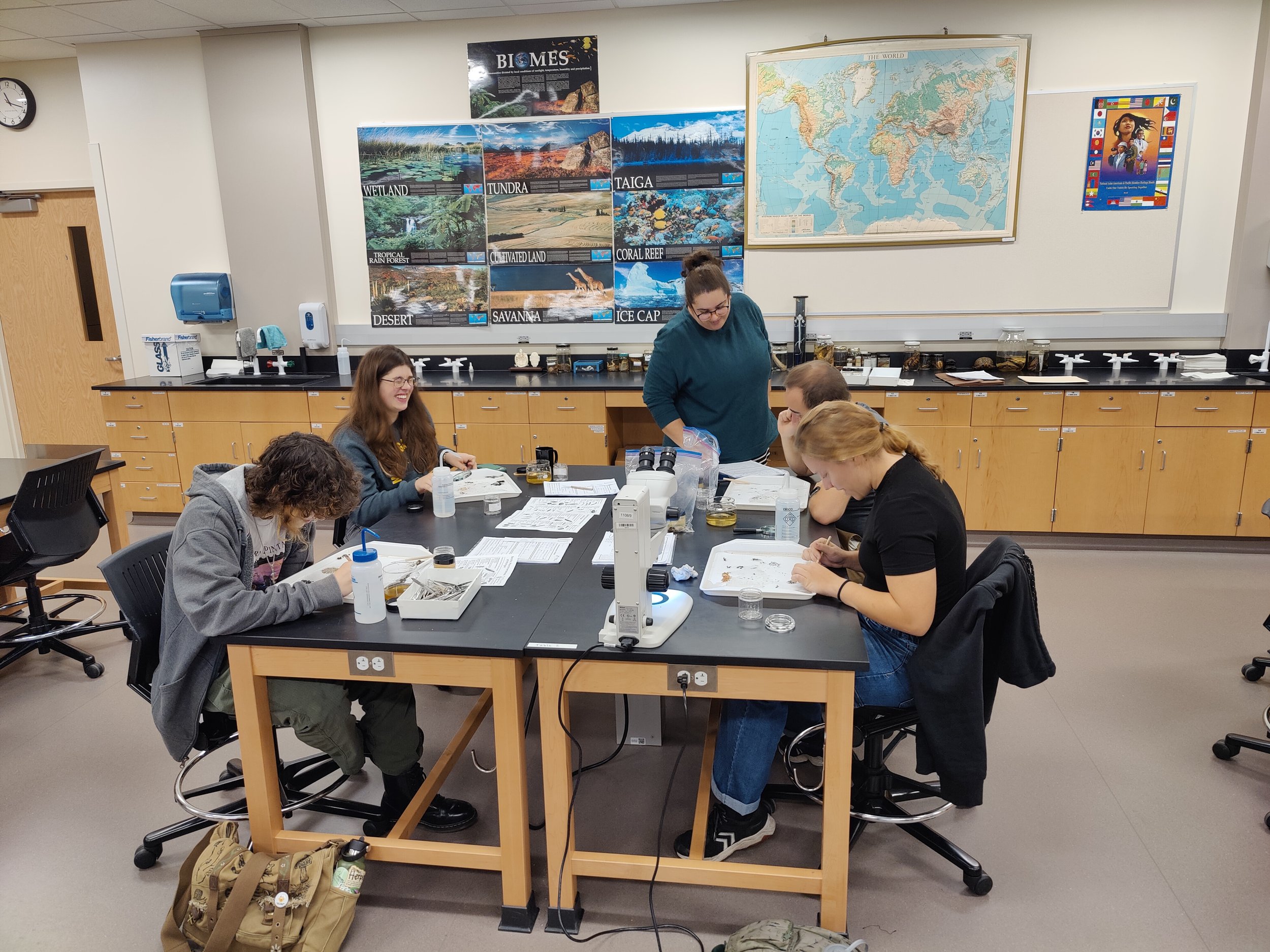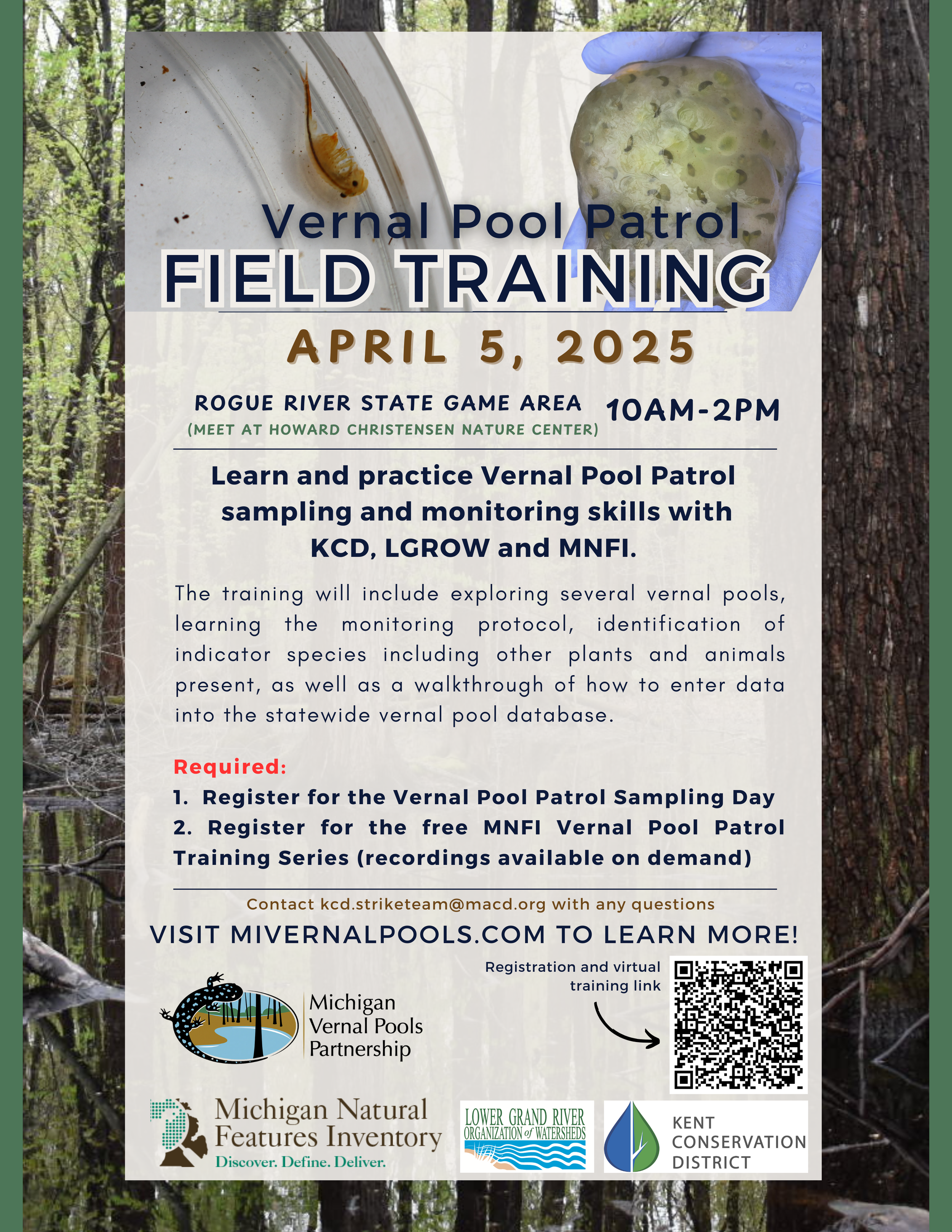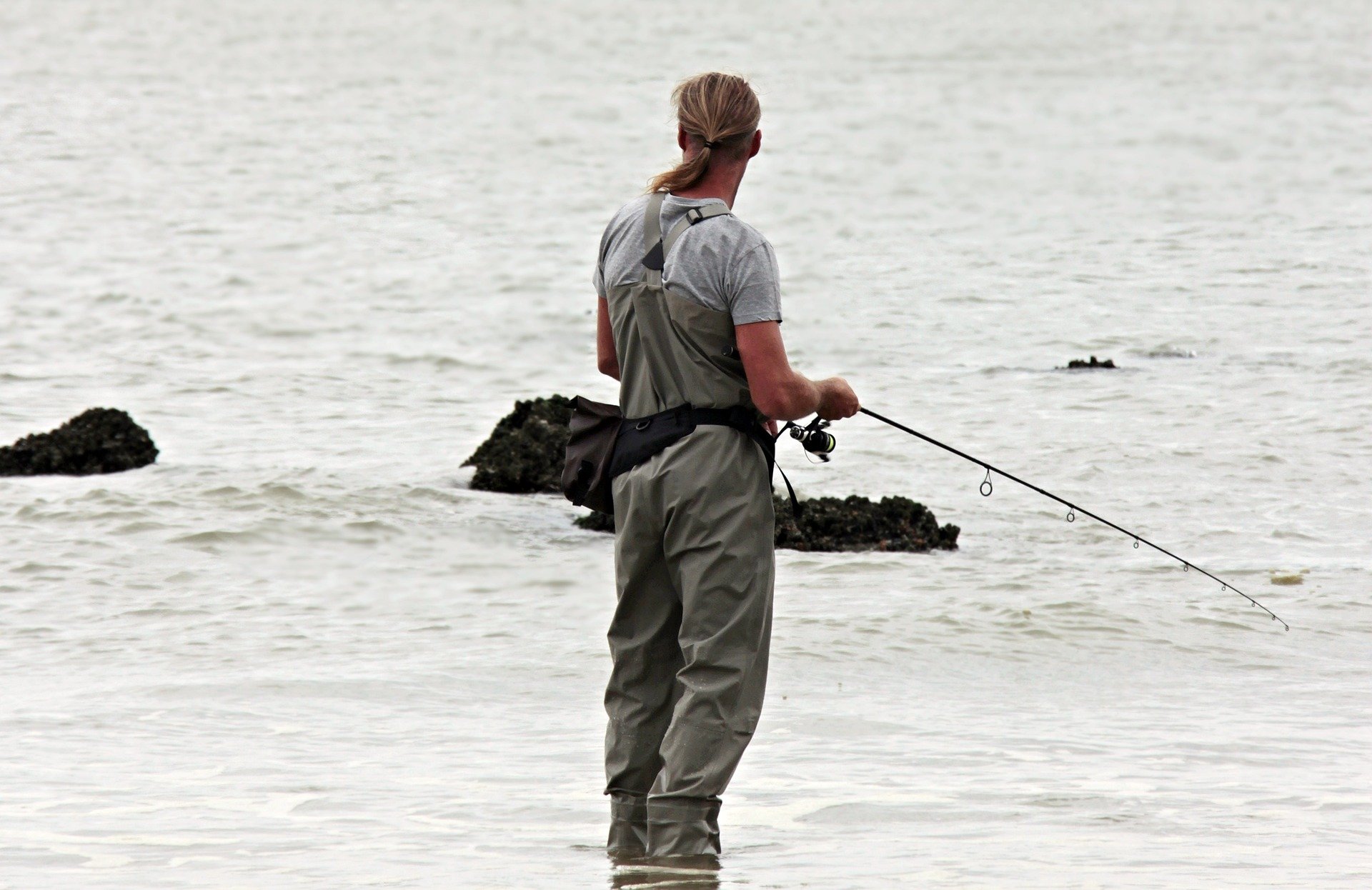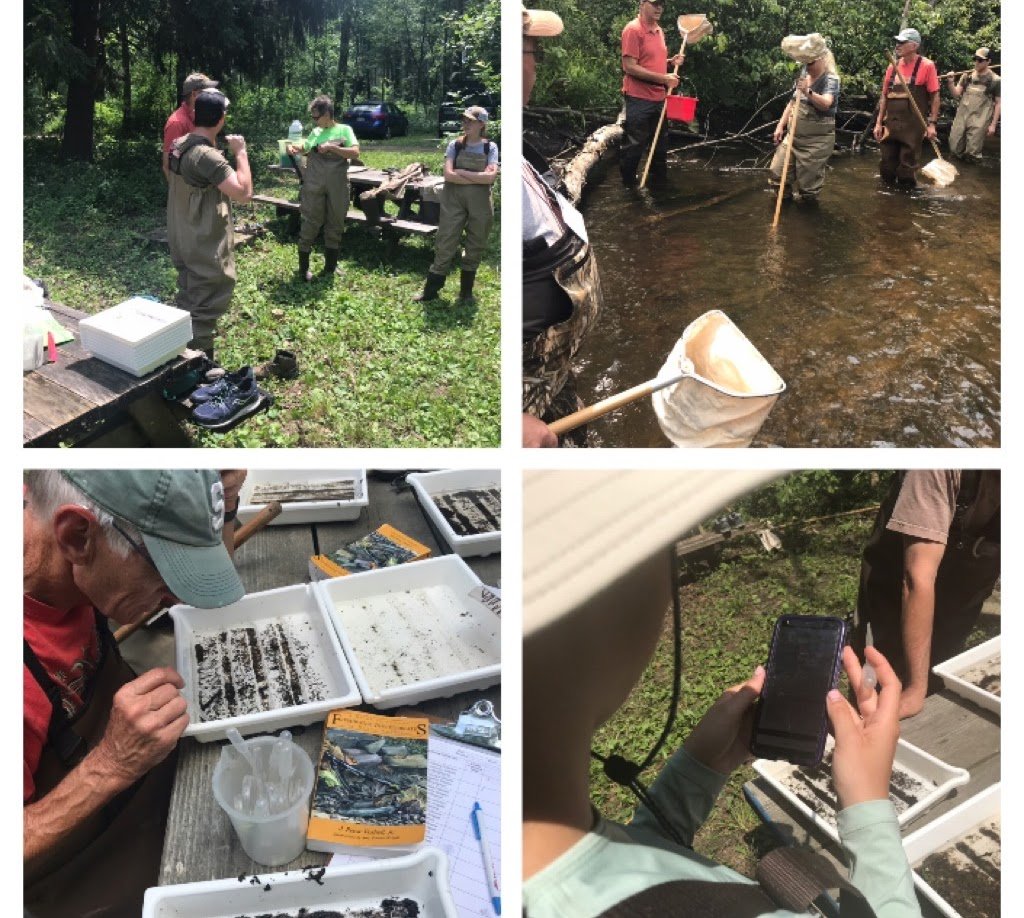Community Science
What Is Community Science?
Community Science is scientific research conducted in part or fully by community members, often in collaboration with professional scientists. LGROW prefers the more inclusive term Community Science, rather than the widely-used term Citizen Science, to highlight the accessibility to community members, one and all, regardless of citizenship status.
Community Science
Enables an organization to collect more data from more locations
Raises awareness of scientific issues
Encourages public participation
Michigan Clean Water Corps (MiCorps)
MiCorps provides protocols for monitoring water quality in rivers and streams.
The protocols involve:
1) collecting/identifying aquatic macroinvertebrates (“water bugs”)
2) surveying + assessing riparian habitat (river bed, banks, and sides)
The water quality data we collect will help us gauge the current health of the Rogue River and track water quality changes over time. Further, this data will be shared with multiple agencies and organizations, such as the Michigan Department of Environment, Great Lakes, and Energy (EGLE), and aid in environmental decision-making down the road.
Teams need to be made up of at least three volunteers at each site. Each team will include:
1 Team Leader (this role requires training. (Note: team leader roles are already filled, but we would be happy to have backups!)
1 Collector (this role requires training, which can be provided upon request)
Pickers – the more the better! - (this role requires no training before the actual event).
If you would like to Learn more or participate in Future sampling please email matt.bain@gvmc.org!
Michigan Vernal Pools Partnership
Vernal Pool Patrol Sampling Day at Rogue River State Game Area
Join Kent Conservation District, Lower Grand River Organization of Watersheds and Michigan Natural Features Inventory on April 5th, 10:00 AM-2:00 PM for a day of exploration and discovery at the Rogue River State Game Area. The Vernal Pool Patrol Sampling Day is a hands-on opportunity to learn about the unique ecosystems of vernal pools and to help gather data for the statewide effort. Get your hands dirty as we collect samples and observe the fascinating organisms that call these pools home. Weather appropriate outerwear and watertight boots are highly recommended. Snacks and refreshments will be provided. We will meet at the Howard Christensen Nature Center and carpool to the field sampling site. If you are willing to sign up as a carpool vehicle, or have any questions please email kcd.striketeam@macd.org or call (616) 365-5771. You can find more information and register here.
Partner Community Science Projects
Angler count (Grand rapids public museum)
Study how the Grand River is used! Angler counters document the number of anglers (people fishing) in a 2-mile section of the Grand River. Training is required to participate. Click here for more information and to register for training!
Improving flood prediction to support resilient communities
The iFlood tool allows community members to identify flooding events and improve flood prediction. Reports help improve predictive models. Become a reporter today!
Salt WATCH and Nitrate watch (Izaak Walton League of America)
Road salt is everywhere during winter months. It keeps us safe on roads and sidewalks, but it can also pose a threat to fish and wildlife as well as human health. Learn more and get a free Salt Watch Kit!
Nitrate (NO3-) is a naturally occurring compound made up of nitrogen and oxygen. Nitrogen is an essential nutrient for plant growth, but human activities produce more nitrogen than natural systems can use. Learn more and get a free Nitrate Watch Kit!
R.A.I.L Project (Riparian Area Integrated Learning)
Aquatic macroinvertebrates are such an interesting way to bring a hands-on inquiry-based activity into your classroom by letting your students gain an insight into concepts and processes that occur within the mysterious world of a stream ecosystem.
You can find resources to start the RAIL Project in your district here!
If you have any questions and/or concerns please contact piccarke@gvsu.edu.


